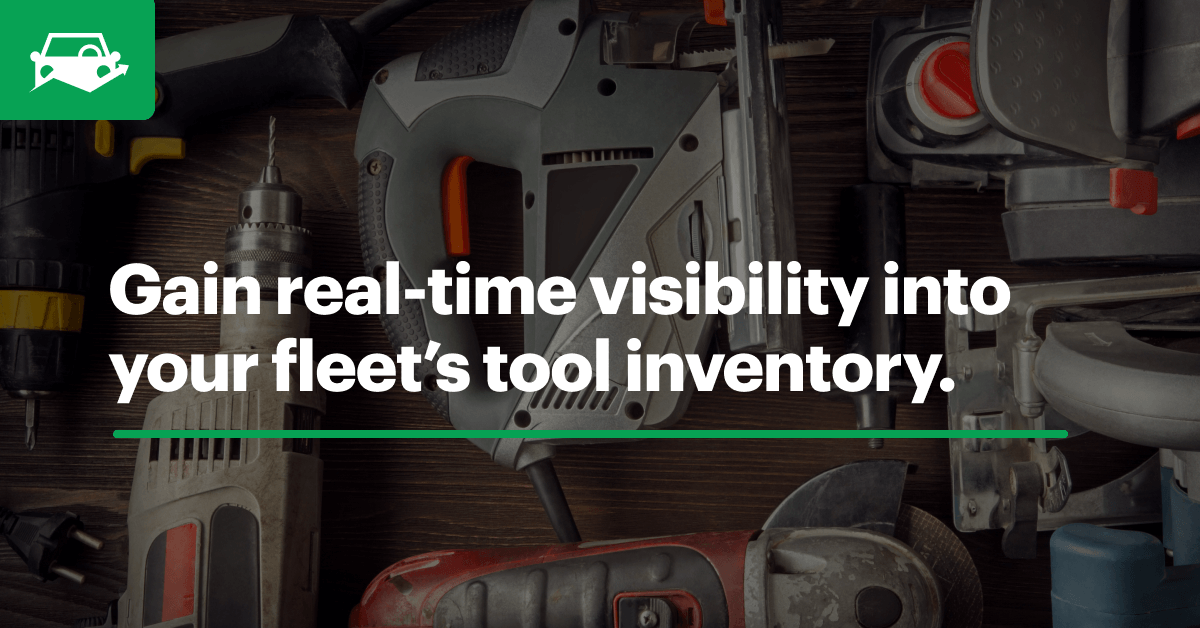Power tool maintenance is often overlooked, but keeping your power tools in good operating condition is key to your team’s productivity. Managing power tool maintenance ensures you get the most out of your tools and avoid premature replacement costs.

Following Power Tool Maintenance Procedures
Your team is only as effective as their tools and equipment. Performing routine power tool maintenance ensures your tools are ready when you need them.
While power tool maintenance may seem inconsequential compared to your other responsibilities, tracking power tool maintenance is one of the best ways to avoid downtime on the job and protect your investments. Regular maintenance improves the longevity of your power tools and helps you avoid unnecessary replacement costs.
Compared to mobile assets, power tool maintenance is relatively simple. Tracking power tool condition and implementing small maintenance routines is all it takes to keep your power tools in good shape.
This process can be further simplified by tracking power tool maintenance history in equipment management software. Tracking and managing power tool maintenance in a centralized system provides maximum visibility into your equipment and allows you to keep up with repairs, utilization and costs.
Use these five tips when developing a strategy for power equipment maintenance.
1. Routinely Inspect Power Tools to Evaluate Condition
Monitoring power tool condition is the best way to identify issues with your tools before they compound and cause downtime on the jobsite. Having your team inspect power tools and equipment each day allows you to consistently track their condition and resolve any issues.
Equipment management software allows you to comprehensively track the condition of your power tools. Using a mobile inspection app, operators can easily complete power tool inspections and quickly capture issues. Results are uploaded into a centralized system, and managers are immediately informed of any issues.
Receiving instant notification of issues allows you to start scheduling power tool maintenance immediately. Instead of waiting to receive a stack of inspection forms or playing phone tag with your team, you’re able to maximize uptime and manage maintenance efficiently.
Configurable equipment management software also allows you to tailor inspection forms for all of your assets. Having custom forms for your power tools ensures your team can effectively communicate issues without hindering their productivity.
2. Schedule Power Tool Maintenance to Avoid Downtime
Scheduling power tool maintenance can be challenging when your team is constantly on the move. Not only do you have to work around operating hours to avoid downtime, but you also need to make sure your team has back-up tools if certain equipment will be out of commission for a few days.
Equipment management software allows you to assign individual tools to operators to easily track use. With this data, you can determine the best time to schedule maintenance and assign a different tool to an operator to avoid any gaps in productivity.
Following power tool maintenance procedures for both routine and unplanned maintenance allows you to efficiently resolve issues and ensure equipment health. In addition to repairing power tools when issues are identified, you should also be scheduling routine preventive maintenance to keep tools in good operating condition.
Creating preventive maintenance schedules in equipment management software helps you stay on top of routine power tool maintenance tasks. Managers can receive notifications for upcoming service tasks, allowing ample time to schedule maintenance and assign new tools to operators.
3. Conduct Routine Power Tool Maintenance
Now that we’ve discussed identifying issues and scheduling maintenance, you may be wondering what steps you can to keep your tools running smoothly. Most routine power tool maintenance practices are quick and easy. Taking these small steps to ensure equipment health can make a huge difference in power tool performance and longevity.
Cleaning
For optimal performance, all power tools should be cleaned after every shift. Most tools can be simply wiped down with a cloth or shop towel before storage. It’s also important to inspect the small crevices on your tools for dirt and grime. This build-up can cause tool malfunctions and breakdowns. To remove debris, use a compressed air canister or even pipe cleaners—they really work!
Lubrication
Your power tools require proper lubrication to function. Using the correct lubricant for your tools is important, as different lubricants have different grades and viscosity.
While some tools require a Teflon lubricant or wax, others may require graphite, bar oil, or other types of lubricant. Follow each tool’s owner’s manual to determine the proper lubricant and the frequency of reapplication.
Sharpening Blades
Many fleets, like landscaping and contracting companies, rely on a variety of equipment with blades. Routinely sharpening blades not only ensures your team can operate efficiently, it’s also important for tool longevity. Using dull blades can put stress on the motor, causing issues that result in downtime or costly tool replacement.
4. Track All Parts and Inventory in a Centralized System
When managing power tool maintenance, it’s a good idea to have spare parts on hand. Having extra parts like carbon brushes or hoses can streamline repairs and increase uptime.
Managing your inventory can be a balancing act. You want to have enough parts on hand for repairs, but an overstock of parts can impact your bottom line and cause storage issues.
Tracking part quantities in a centralized software enables you to monitor and optimize inventory levels. An equipment management software with a dedicated parts app is the best solution to organizing and managing inventory.
Using a comprehensive database for your inventory allows you to clearly view inventory levels and clarify value. Managers can also receive notifications when inventory levels are low to avoid stockouts. With reorder alerts, you can take a proactive approach to optimize your inventory and avoid having to rush to a hardware store for parts in the middle of your workday.
5. Follow the 5S System to Ensure Efficiency
When managing your power tools, small equipment and spare parts, organization is key. Storing tools in an organized manner ensures you never have to go hunting down your tools. They’re always in their designated place.
To keep your power tools and equipment organized, consider using the 5S System. It boils down to these simple five words: sort, set, shine, standardize and sustain.
Implementing the 5S System can have a significant impact on your day-to-day operations. By having every tool in its place and continually monitoring inventory levels, you can maximize efficiency across your operation by perpetuating cleanliness and organization.
Fleetio helps you get the most out of your power tools! By managing equipment and vehicles in the same system, you can maximize visibility into all of your assets and improve fleet efficiency. Start your free trial or request a demo today.




